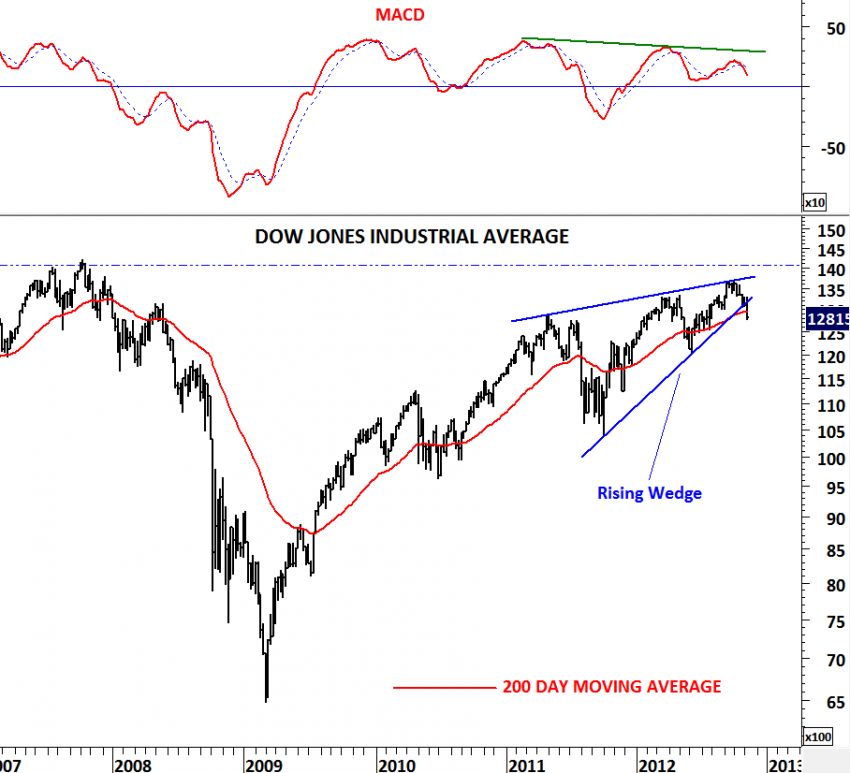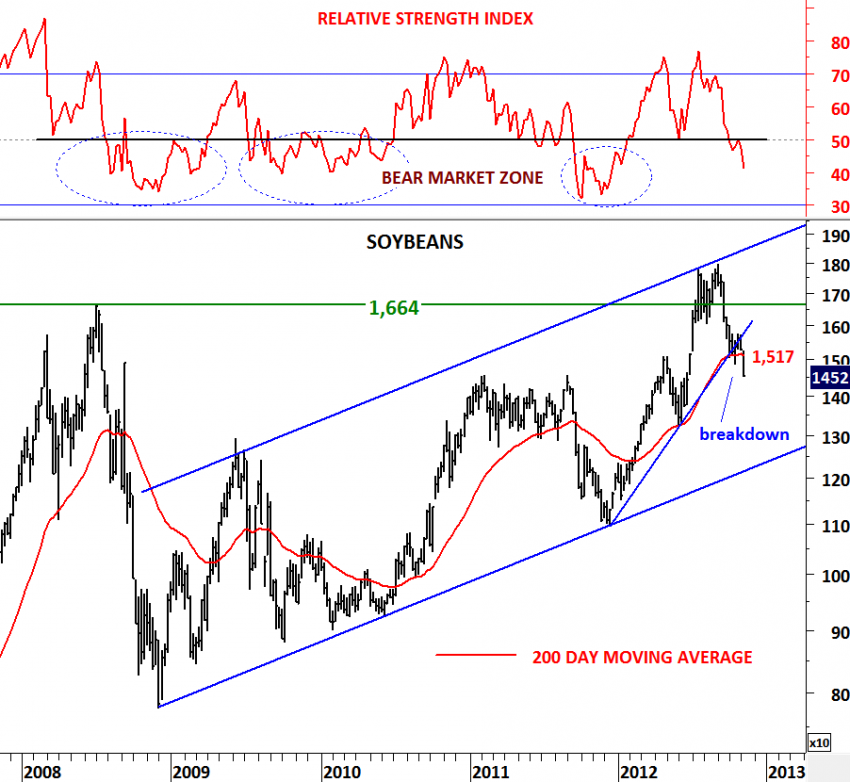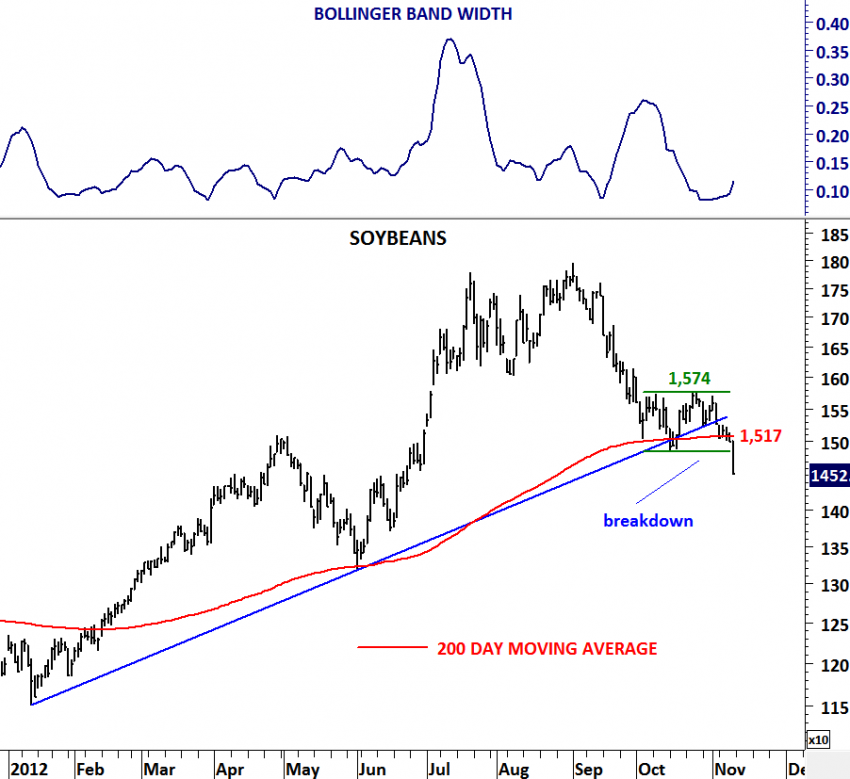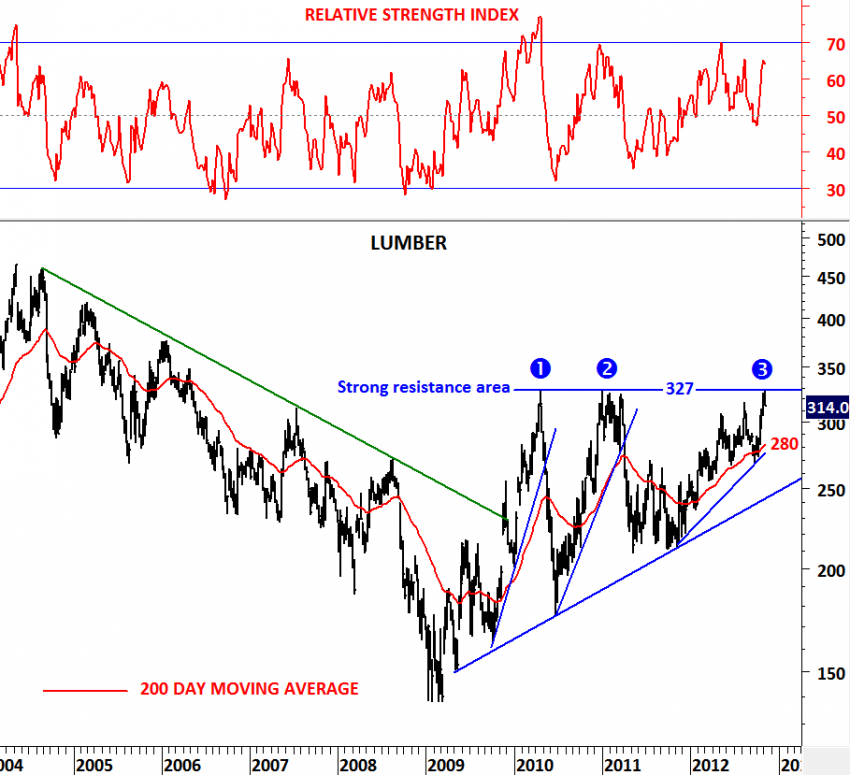DOW JONES INDUSTRIAL
Rising wedge is a bearish pattern that begins wide at the bottom and contracts as prices move higher and the trading range narrows. Rising wedges slope upwards and have a bearish bias. The loss of upside momentum on each successive high gives the pattern its bearish bias. Dow Jones Industrial Average has been forming a rising wedge (bearish) over the past two years. 2009-2012 uptrend is likely to end with a bearish wedge pattern that is forming very close to historical high level at 14,000 levels. As of this week, 200 day moving average stands at 12,945 levels. Index has already breached the lower boundary of the rising wedge and it is now challenging the long-term average. Failure to hold above 12,945 levels will be followed by a sharp correction towards 11,000 levels. Corrections that follow wedge patterns usually retrace all the way back to the beginning of the wedge, in this case 10,500 levels. Conclusion is: this is a clear negative technical outlook for U.S. equities and suggests larger scale corrections.





















